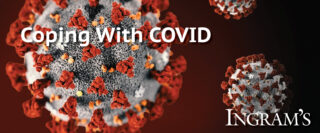HOME | ABOUT US | MEDIA KIT | CONTACT US | INQUIRE
HOME | ABOUT US | MEDIA KIT | CONTACT US | INQUIRE
Is the Kansas City region at a tipping point with medical resources to treat COVID-19 patients? In large part, the answer to that may be determined by where you live—some hospitals are seeing significantly more demand than others.

Perhaps the most glaring example of that is in Topeka, where Stormont Vail Health’s flagship hospital saw a doubling of admissions over the past two weeks. From 45 patients on Nov. 5, the hospital’s caseload hit 91 on Tuesday. As a result, the Emergency Department has created overflow spaces for new patients, and some waiting rooms have been converted into patient wards.
Complicating the challenge, hospital officials say, has been the reduction in manpower as members of the staff have been forced to quarantine or have contracted the illness themselves. A week ago, 75 employees there were considered active COVID-19 cases; by Tuesday, that had surged to 114.
The rest of the region, while seeing additional demand, is faring better overall, according to figures compiled by the Mid-America Regional Council, even with peak demand in admissions this week. The seven-day rolling average for daily regional admissions hit a record 185 on Tuesday. The good news in that figure, however, is that as a percentage of overall cases, the region has seen admissions plunge from 85.2 percent on May 26 to this week’s 28.3 percent. That’s an indicator of the growing number of newly infected who are experiencing only minor symptoms, if they are symptomatic at all.
The regional marketplace totals nearly 6,700 beds, MARC’s data set shows, and as of Tuesday, nearly a third of those remained available. Of the roughly 1,200 intensive-care beds in the market, COVID-19 patients accounted for slightly more than one-third of the 504 patients being treated.
A key factor in the increase in positive cases identified in the bi-state area is the surge in the numbers of people being tested. Kansas, for example, reported a record 26,969 tests on Monday, the first time it had crossed the 25,000 threshold since the pandemic started. Of those, 7,234 were positive, a rate of nearly 26.8 percent. Missouri hit its testing peak more than a month ago, with 130,675, a figure that has dropped significantly since then, averaging about 20,000 a day. Monday’s testing volume of 16,348 yielded 3,718 positives, a rate of about 22.75 percent.